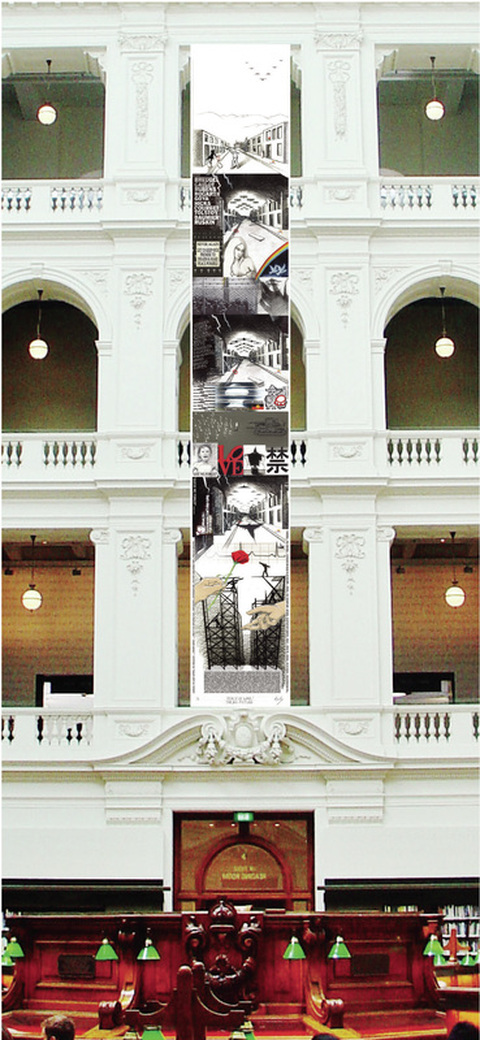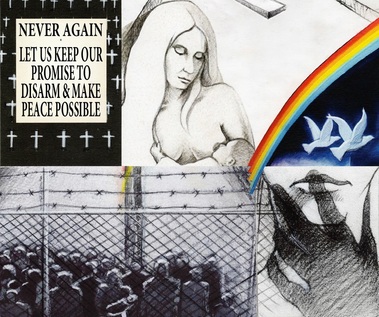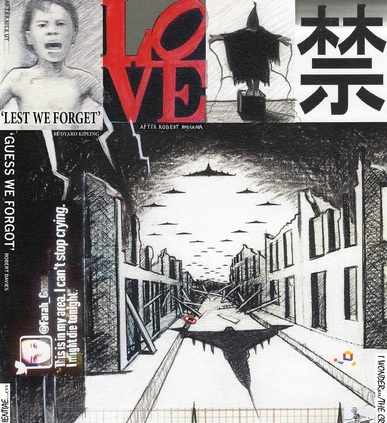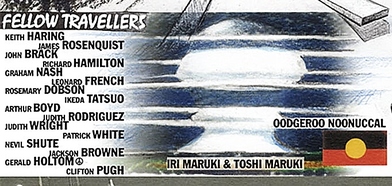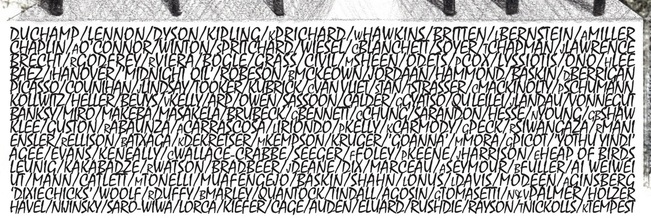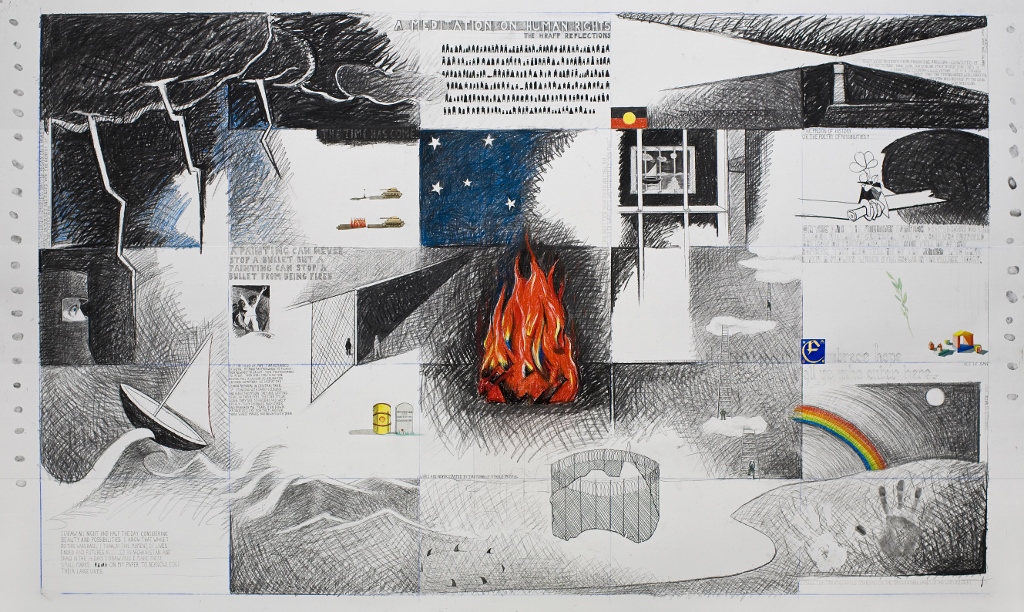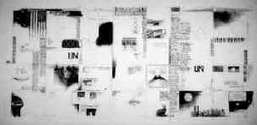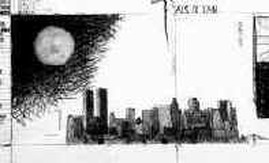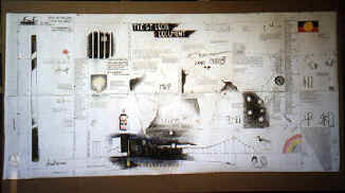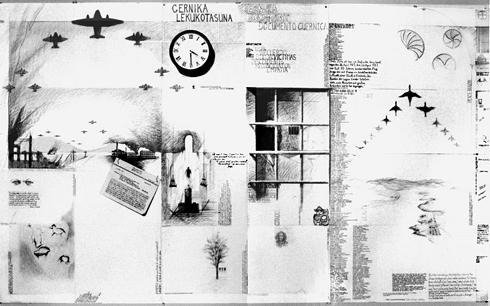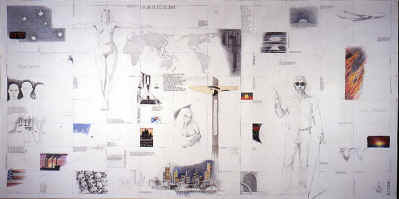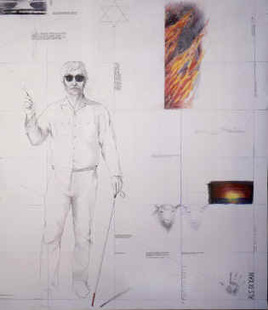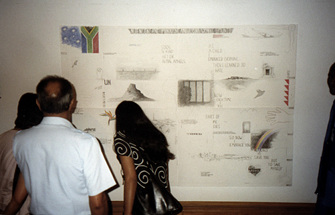THE BIG PICTURES – “CULTURAL MAPS & DOCUMENTS” A CONTINUING SERIES
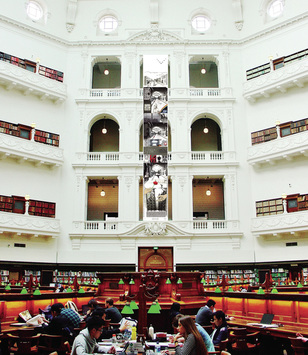
Background to these works:
William Kelly has always been committed to drawing and printmaking as his principal means of communication. As early as 1984 this was pointed out in a video interview the artist had with art historian and later Director of the National Gallery of Australia, Betty Churcher, in which she said "Drawing is one of the crucial elements in your work. And in many cases you use drawings not as a means to an end but as an end in itself...your drawings are often as large as a painting and some of your drawings are as large as your biggest paintings."
William Kelly has always been committed to drawing and printmaking as his principal means of communication. As early as 1984 this was pointed out in a video interview the artist had with art historian and later Director of the National Gallery of Australia, Betty Churcher, in which she said "Drawing is one of the crucial elements in your work. And in many cases you use drawings not as a means to an end but as an end in itself...your drawings are often as large as a painting and some of your drawings are as large as your biggest paintings."
PEACE OR WAR / THE BIG PICTURE
From August 2014 to December 2016 William Kelly held a Creative Fellowship at the State Library of Victoria during which he used the resources to explore what he has called “Fellow Travellers” - those artists who have stood against pressures to accept war as normal, whose art has helped influence or support him on his lifelong journey as an artist, pacifist and activist. These fellow travellers -artists from virtually every medium - include Duchamp, Chaplin, Nijinsky, Picasso, Vonnegut and Woolf to ‘The Dixie Chicks’, Keith Haring, John Lennon and Ai Weiwei. The major work to come out of these two years is Peace or War/The Big Picture about which art historian, Dr. Vincent Alessi, has written "in this remarkable artwork....Kelly lays out for us both our historical failures but perhaps more importantly, the constant human belief that we can do better”.
A MEDITATION ON HUMAN RIGHTS
A “public drawing” that is part of the “Cultural Maps and Documents” series created in Melbourne as part of the national “Human Rights Art and Film Festival”.
CHAUTAUQUA DIARY
First of the Cultural Maps and Documents Series:-
In 1994 while a visiting artist at the Chautauqua Institution in New York State, Kelly began the first of these works "The Chautauqua Diary". In the gallery an 8' x 15 ' sheet of paper was installed. Each night he drew images and wrote words and quotes on the paper. Each day the drawing came closer to realisation. With each day the number of gallery visitors grew - first time visitors to see the work and repeat visitors to see the work evolve.
Each element related to some experience, thought or hope that arose out of that day's activities. As such, it evolved as both a document and map of terrain that has been experienced and is known. It and subsequent 'documents' were also to become a chart of possibilities and aspirations.
"William Kelly's humanist concerns...and strength as a draughtsman are part of every work he does."
Don Kimes, Chair of the Department of Fine Art at The American University, Washington, D.C. and Director, The Chautauqua School of Art
In 1994 while a visiting artist at the Chautauqua Institution in New York State, Kelly began the first of these works "The Chautauqua Diary". In the gallery an 8' x 15 ' sheet of paper was installed. Each night he drew images and wrote words and quotes on the paper. Each day the drawing came closer to realisation. With each day the number of gallery visitors grew - first time visitors to see the work and repeat visitors to see the work evolve.
Each element related to some experience, thought or hope that arose out of that day's activities. As such, it evolved as both a document and map of terrain that has been experienced and is known. It and subsequent 'documents' were also to become a chart of possibilities and aspirations.
"William Kelly's humanist concerns...and strength as a draughtsman are part of every work he does."
Don Kimes, Chair of the Department of Fine Art at The American University, Washington, D.C. and Director, The Chautauqua School of Art
SANTA LUCIA DOCUMENT
GUERNICA DOCUMENT
In 1998 Kelly was invited to be visiting artist in Guernica, Spain. His visit coincided with the commemoration of the bombing of the city of Guernica (Gernika in the Basque language). This work was later begun in his studio in America in early 1998 and completed in an installation at the Euskal Herria Museoa (Museum of the Basque Country), Guernica in April of that year. It is now installed in the Town Hall of the City of Guernica (Gernika-Lumo/Basque Country) Spain.
|
"Kelly continues to admire that great work of Picasso ('Guernica') while feeling that, in this age of mass communication of images of suffering transmitted around the world, his own work should not express confrontation and violence but address them as a means of both extending his own challenges as an artist and contributing to the international dialogue on peace and reconciliation." from a Gernika Museoa (Guernica Museum) document |
LOVE SONG FOR THE MILLENNIUM
|
This work made in Factory One in 1998 - 1999 had its first showing in the exhibition "Unconditional Love and Goodwill: A Decade of Art by William Kelly" as part of the Melbourne International Festival October, 1999. The exhibition was sponsored by Amnesty International. |
NJENGENGANE MINA NGANGIGONA WONKE UMUNTU
|
This work was done parallel to two events in South Africa - National Conference on Human Rights* and the opening celebrations for the commemoration of the International Print Folio: 50th Anniversary of the United Nations Declaration of Human Rights.
This installation drawing was made in place at the Durban Art Gallery. The title is in Zulu and translates "As a child I embraced everyone." *This work has been assisted by the Commonwealth Government through the Australia Council, its arts funding and advisory body. |
